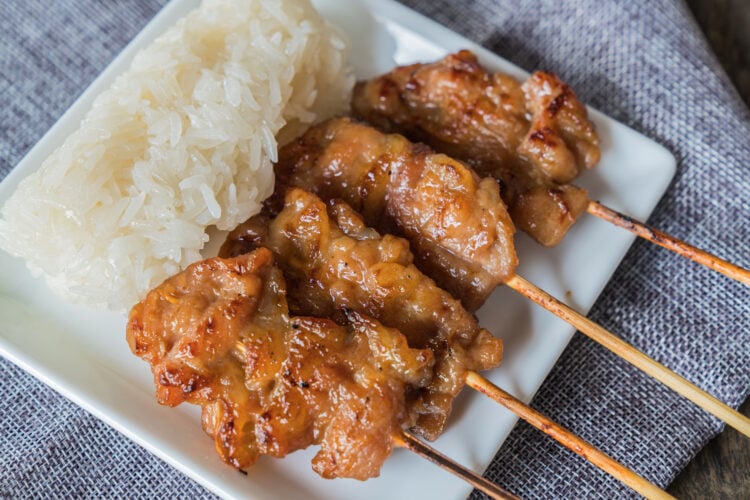Moo Ping, what is it?
Ah, Moo Ping! Pronounced [mǔː pîŋ] in Thai, it literally means “grilled pork.” It’s a hidden gem of Thai street food that has been making waves since 1952. Since then, it’s won over the taste buds of everyone who’s tried it.
This little slice of culinary heaven is a true mealtime chameleon. Breakfast? Moo Ping. Lunch? Moo Ping. Dinner? You guessed it—Moo Ping.
It’s typically sold on Thailand’s bustling streets, mainly between 5 a.m. and 11 a.m., and it’s always ready to satisfy early-morning hunger or late-night cravings.
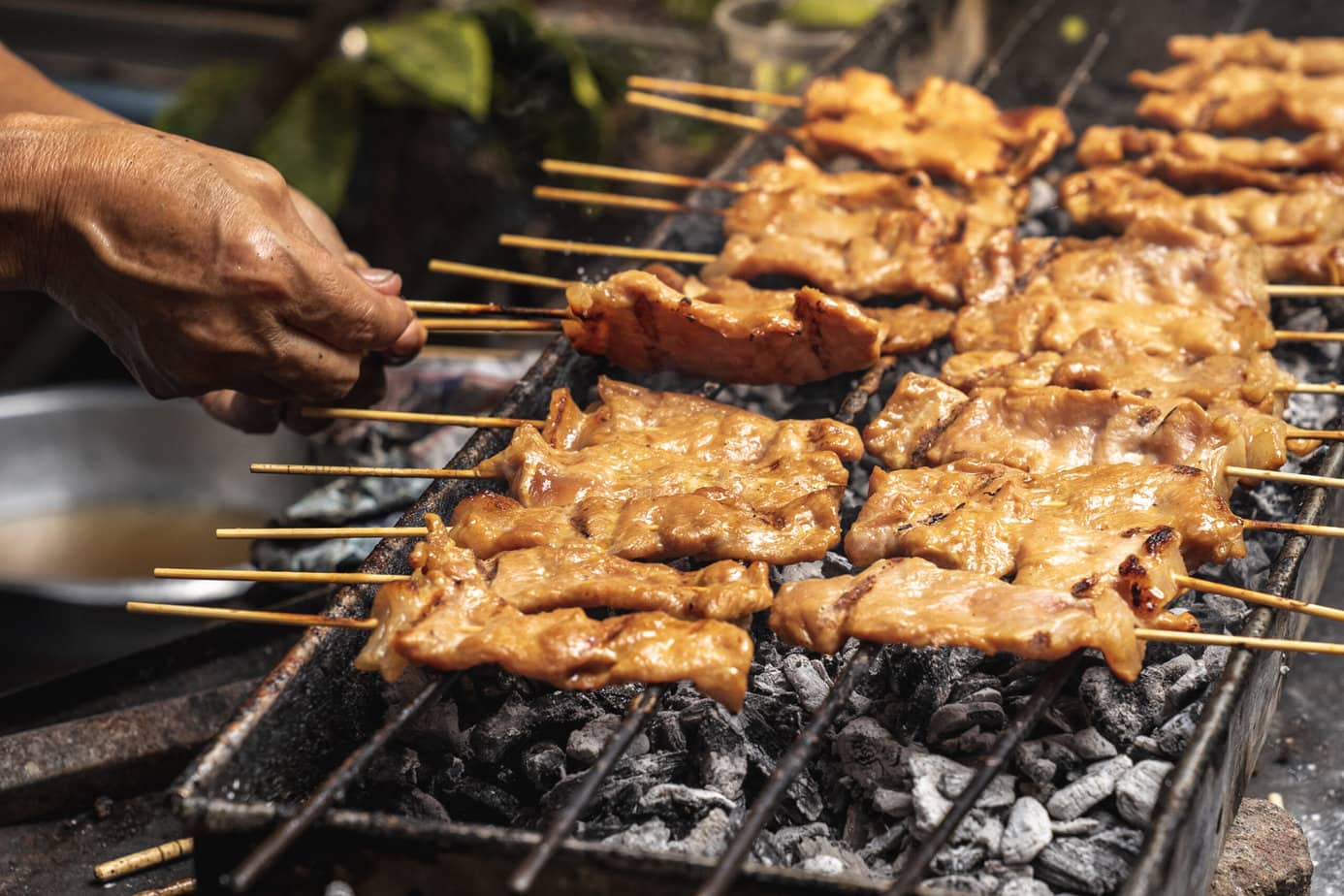
And the best part? This treat won’t cost you an arm and a leg. The price per skewer usually ranges from 5 to 10 Baht, depending on pork prices.
So next time you’re strolling through the streets of Thailand, don’t forget to stop for a Moo Ping. Your stomach will thank you! And if you’re not in Thailand, I’ll take you there from your own kitchen—I couldn’t get enough of it when I was there.
These Thai sweet-and-savory skewers almost rival Pad See Ew in my eyes—that’s how much I love them!
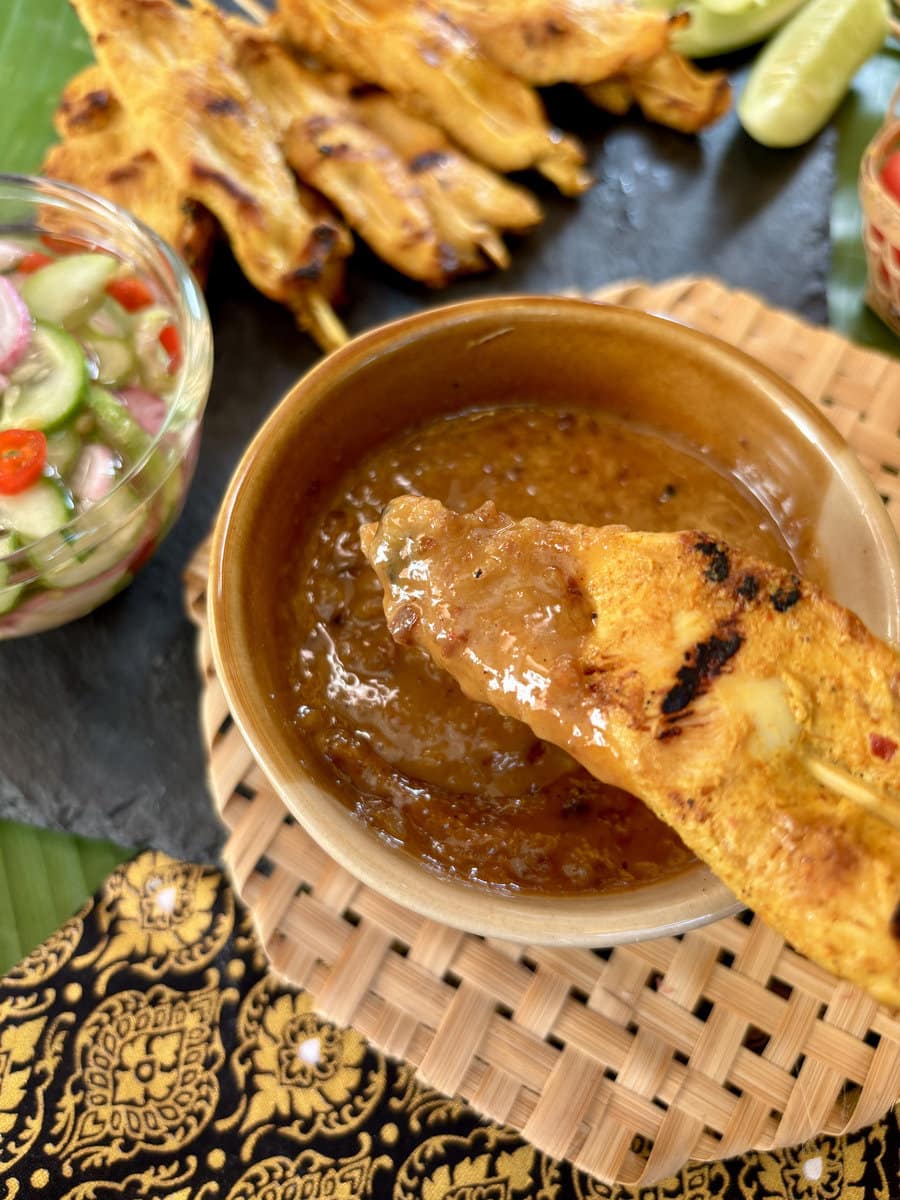
How to serve Moo Ping?
Moo Ping is traditionally served with sticky rice, a harmonious pairing of juicy grilled meat and soft, sticky grains. A typical meal is like a little bundle of happiness: three nicely grilled Moo Ping skewers with a packet of sticky rice.
But hey, nothing’s stopping you from firing up a classic barbecue and serving a simple salad on the side. Plus, you’re making them at home—so why limit yourself to just three?
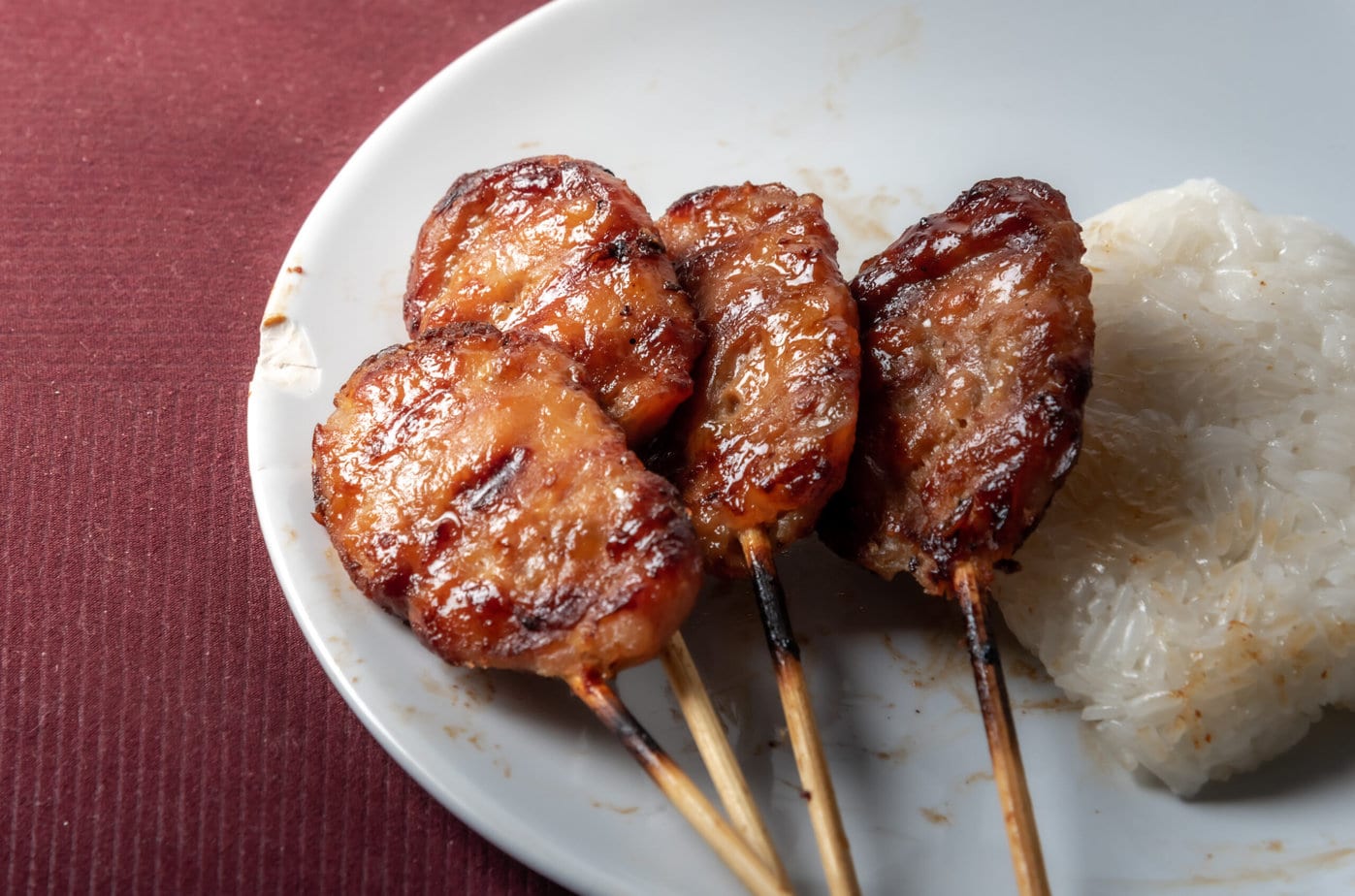
How to make Thai sweet-and-savory pork skewers?
These skewers are made with slices of pork mixed with a sweet-and-savory marinade that balances the saltiness of fish sauce, light soy sauce, and oyster sauce with the sweetness of palm sugar.
Garlic and white pepper bring plenty of bite.
Traditionally, the garlic is pounded into a paste in a mortar with cilantro root. To make this dish more accessible, simply chop or mince the garlic cloves and use chopped tender cilantro stems instead of the harder-to-find root.
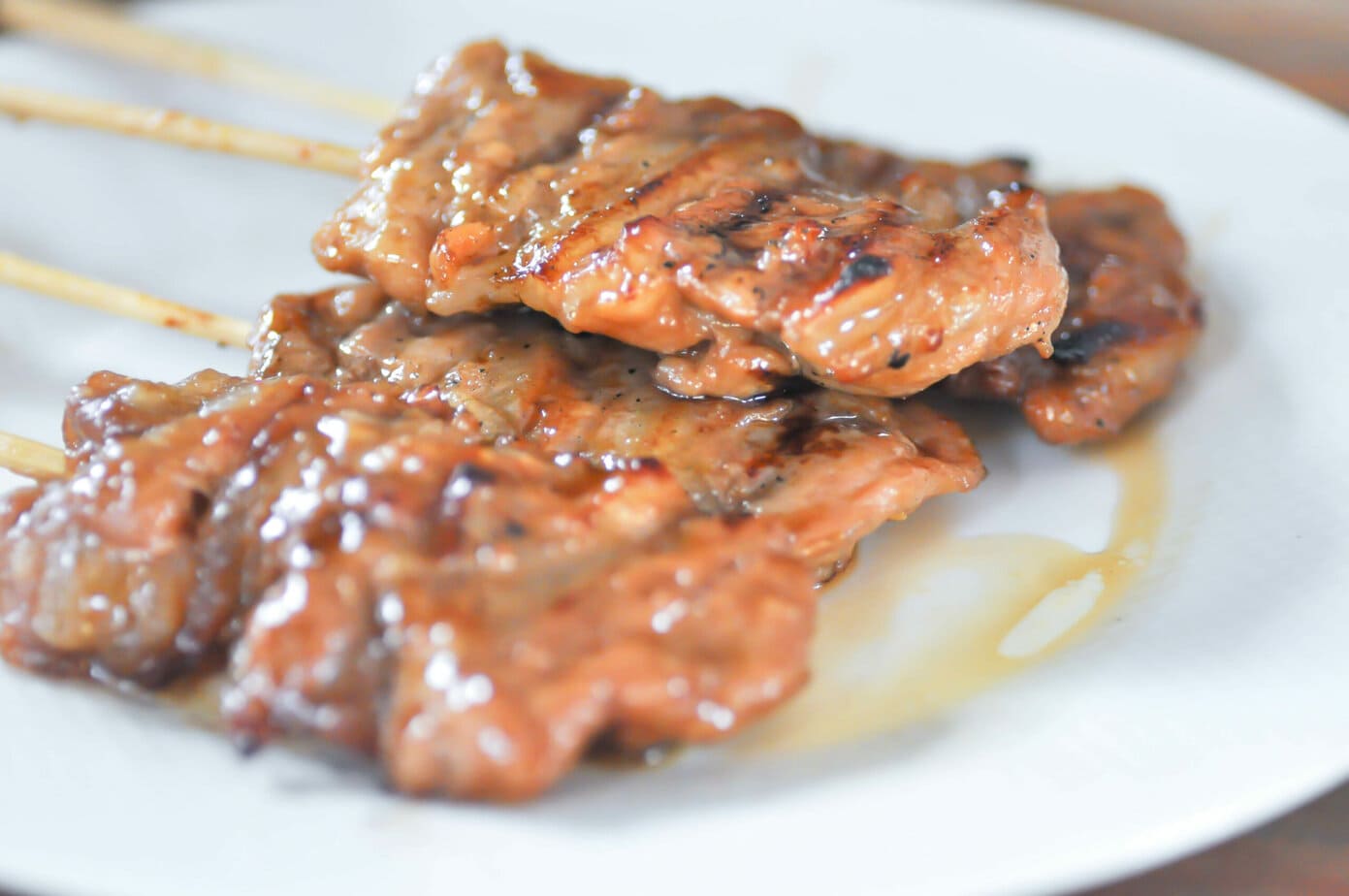
Key ingredients for Moo Ping
Glutamate: Used to give the marinade a savory boost.
Cilantro stems: They add a fresh, herbal note to the marinade. Traditionally the roots are used, but as with my Thai pork salad, we substitute with the stems.
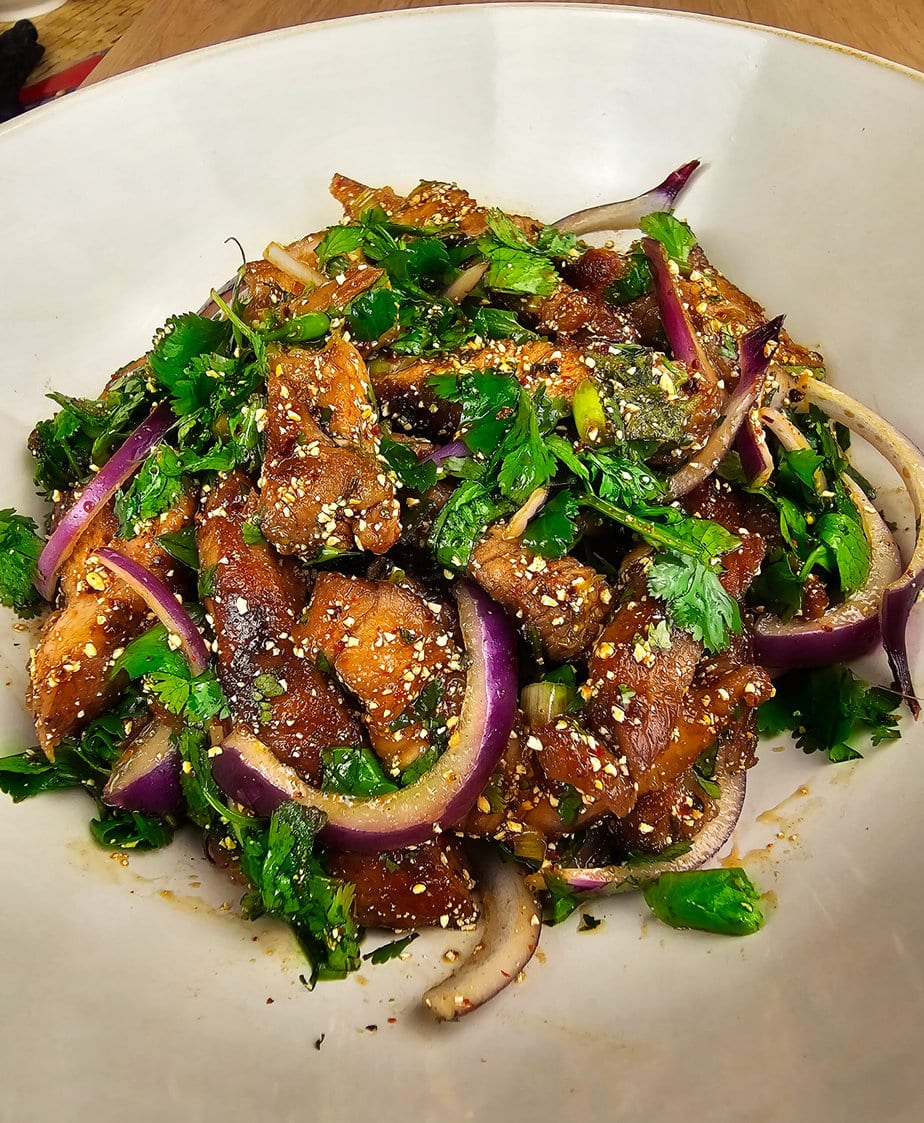
Palm sugar: It balances the saltiness of fish sauce, light soy sauce, and oyster sauce with its sweetness.
Garlic cloves: They add punch to the marinade.
Oyster sauce: It adds deep umami to the marinade.
White pepper: It adds warm, gentle heat to the marinade.
Light soy sauce: It adds saltiness and depth to the marinade.
Fish sauce: It adds a salty, umami backbone to the marinade.
Unsweetened coconut cream: It forms a sticky, glossy glaze on the meat while keeping the pork moist as it grills.
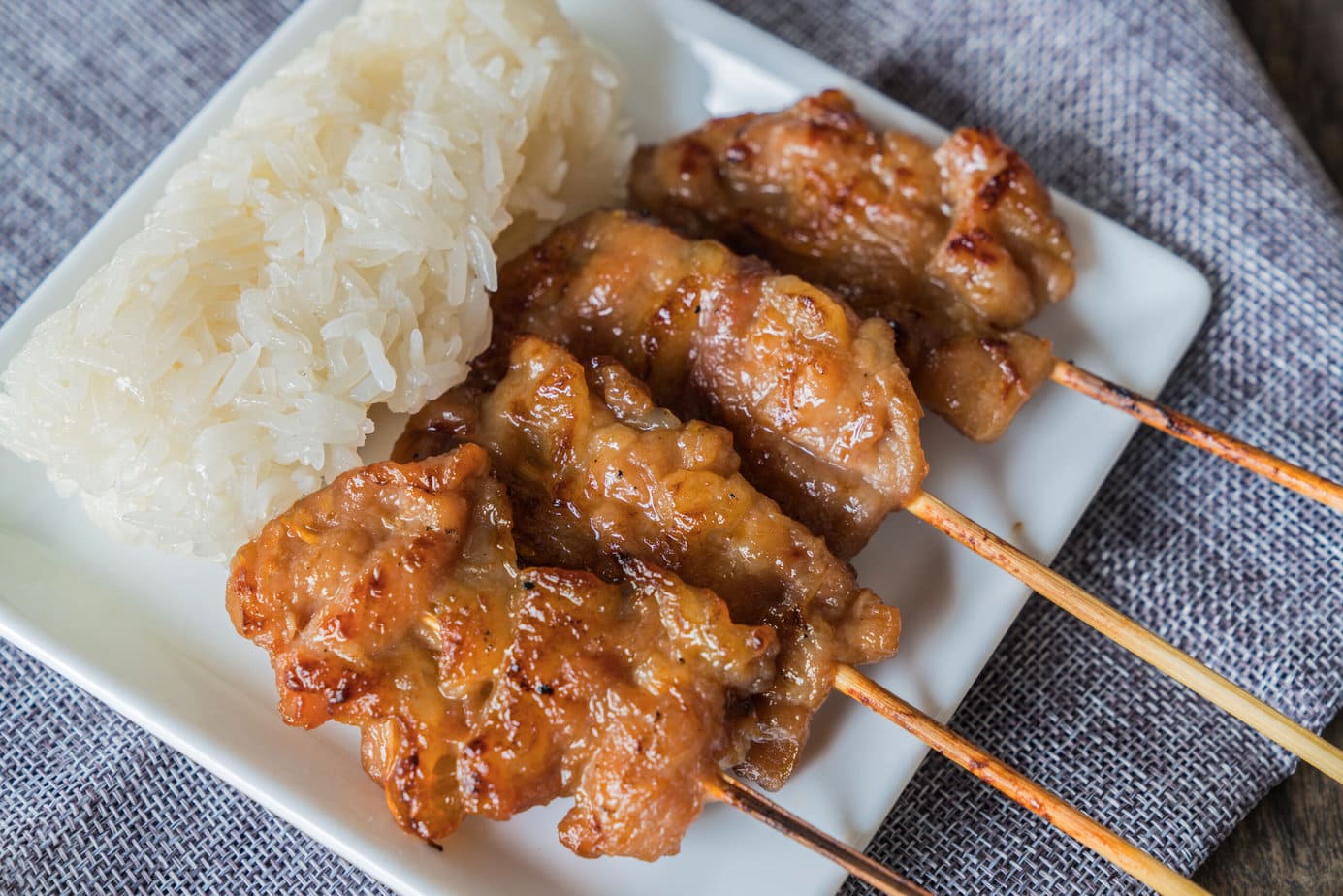
Ingredients
- 450 g pork shoulder in one piece, if possible
- 90 ml unsweetened coconut cream see note
Marinade
- 1 pinch MSG optional
- 7 g cilantro stems, chopped
- 15 g palm sugar, finely chopped see note
- 9 g garlic cloves, minced
- 9 ml oyster sauce
- 4 g white pepper
- 8 ml light soy sauce
- 8 ml fish sauce
Instructions
- In a bowl, whisk together the marinade ingredients until the sugar dissolves.1 pinch MSG, 7 g cilantro stems, chopped, 15 g palm sugar, finely chopped, 9 g garlic cloves, minced, 9 ml oyster sauce, 4 g white pepper, 8 ml light soy sauce, 8 ml fish sauce
- Freeze the pork for 15–30 minutes to make slicing easier. Cut into pieces about 5 cm across and 2 cm thick, then slice into pieces about 5 mm thick. The goal is thin pieces for skewering—don’t stress, just make sure they’ll hold on the skewer.450 g pork shoulder
- In a mixing bowl, combine the meat with the marinade. Mix very well so everything is coated, then marinate in the fridge for up to 3 days.
- Thread a piece of pork onto a skewer, pierce it twice to secure, and scrunch it like an accordion. Continue adding pork, packing it tightly and leaving 4–5 cm of bare skewer at the bottom with the tip exposed at the top. Repeat with the remaining pork.
- Preheat the grill to medium-high. Brush the pork with coconut cream. Grill, turning and basting regularly with more coconut cream, until lightly charred and cooked through (8–10 minutes). If flare-ups occur, move the skewers away from the flames.90 ml unsweetened coconut cream
- Let rest for 1 to 2 minutes before serving.
Notes
Nutrition
Sources: Serious Eats, Hot Thai Kitchen, Punchfork
